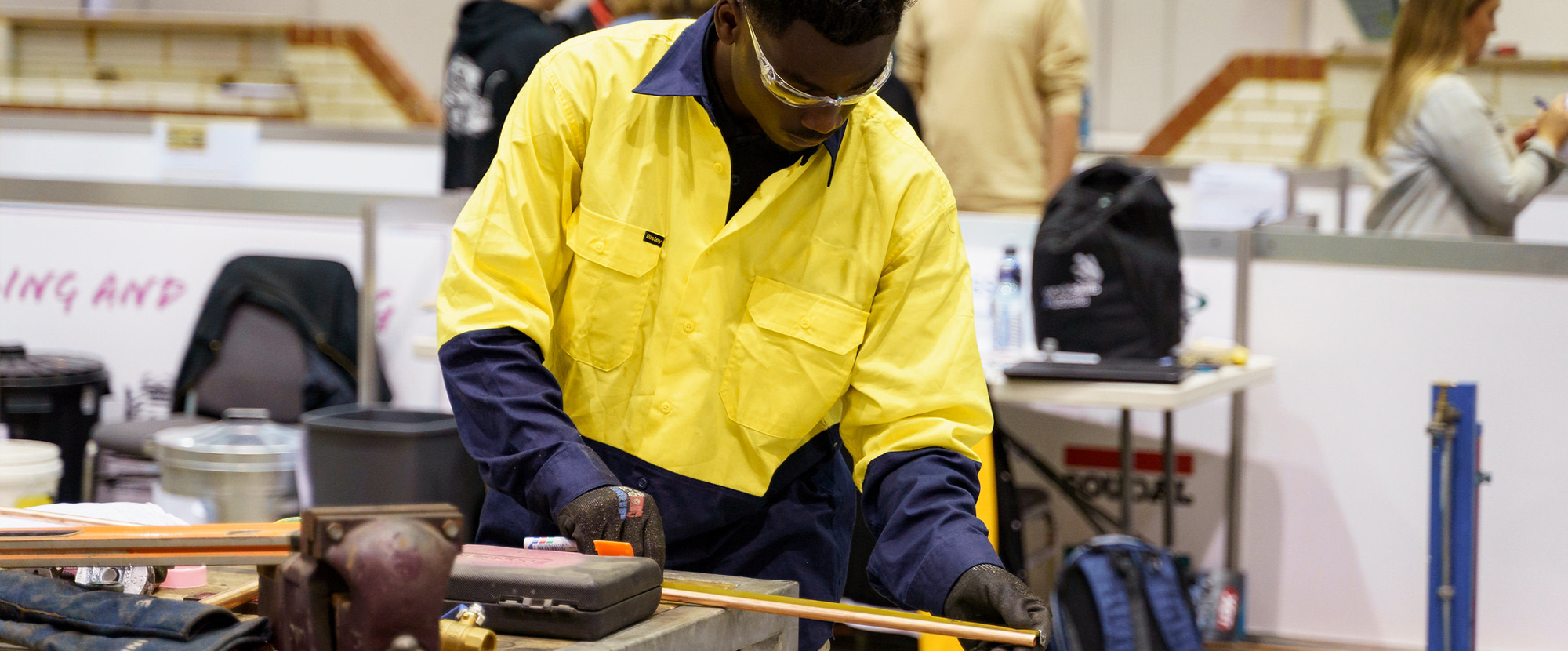September-November 2015: Ensuring young Australians have opportunities for the jobs of the future
By: Mark Callaghan, CEO
The last three months have flown by for WorldSkills Australia. Two years of dedication to training and skills excellence culminated in the ultimate challenge for Australia’s best young apprentices, trainees and students in August as the 26-strong 2015 Skillaroos team competed at the 43rd WorldSkills Competition in São Paulo, Brazil. I am very proud to report that the 2015 Skillaroos performed exceptionally well, earning a combined total of three silver medals, two bronze medals and eleven medallions of excellence and raising Australia’s ranking to 12th in the world.
The scale of the event was impressive. The competition spanned 213,000m² of floor space across four days of intense competition. Millions of dollars’ worth of infrastructure and resources were used and thousands of volunteers dedicated their time and expertise to make this amazing opportunity possible for the 1,168 competitors representing 59 countries – making this the largest competition in WorldSkills history.
Shortly after the Skillaroos returned home, the Foundation for Young Australians (FYA) released their report The New Work Order: Ensuring young Australians have skills and experience for the jobs of the future, not the past. This report emphasised the importance of education keeping up with advancing technology to ensure that young people receive sufficient training to lead them into the future. FYA’s CEO, Jan Owen asserted that young people must be put at the forefront of driving the economy if Australia is to overcome to the challenges of its aging population and shrinking workforce, and that education must follow suit.
The FYA report states that around 70% of young Australians undertaking vocational education and training studies are training for jobs that could look very different within the next 10-15 years or not exist at all due to automation. Haven’t we been seeing this occur over the last twenty years? I am hard pressed to think of a single vocation that hasn’t changed in some capacity over the last 100 years. With technology increasing at a rapid rate, trade and skill-based professions are not disappearing. Rather, they are entering an exciting period of evolution.
The signage profession is a prime example of evolution within vocations. Once a profession based entirely on one’s ability to accurately hand-brush designs, the profession is now ruled primarily by digital media. As a result, the Signage Training Package has evolved to reflect this evolution within the industry, training young people to utilise design the latest technological advances in addition to a paintbrush.
Other professions are following suit. Where the jeweller used to spend 30+ hours building wax moulds for gold and silver smithing by hand, it is now commonplace for the same jeweller to utilise CAD software to design and print the same wax mould in the matter of a few hours.
Vocational education and training providers are refining the content of their courses to include advances in technology. That said, the vast majority of trade and skill-based professions can never truly be automated. While technology aids in the design of a custom jewellery piece, a skilled artisan is still required to design and refine a piece to earn the well-respected title of ‘hand-made’.
In short, advancing technology is not removing the need for trade and skill-based professions – it is evolving them into well-rounded career opportunities for Australians of all ages.
The Victorian Minister for Training and Skills, the Hon. Steven Herbert recently announced that Melbourne would host the 2016 WorldSkills Australia National Competition and that the Victorian Government would dedicate $1.75 million toward the event. The Victorian Government will also dedicate $50 million to a TAFE Back to Work fund to support TAFEs to partner with industry to deliver 7,000 new apprenticeships and traineeships, and $320 million to a TAFE Rescue Fund to help TAFEs meet its obligations to the community. These are undoubtedly great initiatives by the Victorian Government to support advances in vocational education and training. However, supporting VET should be a shared responsibility between Government and industry.
On 2 September, I had the pleasure of facilitating a panel discussion at the International Network on Innovative Apprenticeship (INAP) Conference at Ballarat’s Federation University, where the 2015 Skillaroo in Jewellery, Jyothi Forman and International Expert in Bricklaying, Troy Everett joined Australian Apprenticeship Ambassadors Ashlee Hodson and Patrick Janes for an engaging and frank discussion about the state of VET in Australia and abroad. Having previously undertaken a school-based apprenticeship himself, Patrick Janes recently took on an apprentice in his own engineering company. When asked why he would take on a school-based apprentice despite the costs of doing so, he stated that it is a good investment. He asserted that it helps businesses discover new talent with the passion and drive it takes to succeed and quickly become assets to their respective industries.
The panellists all agreed that industry leaders providing opportunities to shine – not unlike what Patrick is doing for his school-based apprentice – helped change their parents’ perceptions of trade and skill-based careers. This is an important lesson for industry leaders: Young people like Patrick, Ashlee and the Skillaroos are examples of how shared support from both government and industry can help change perceptions and provide countless career opportunities.
The Victorian Government is taking the first steps in changing perceptions. It is now industry’s turn to step up to the plate. By investing in training the next generation of skilled labour and promoting opportunities for advancement and recognition of skills excellence such as WorldSkills Australia Regional Competitions, industry leaders can ensure that the skill sets of young Australians continue to advance with technology, allowing them to be personally fulfilled in their careers as well as being an asset to their employer and to Australia’s future prosperity.
 WorldSkills Australia
WorldSkills Australia 